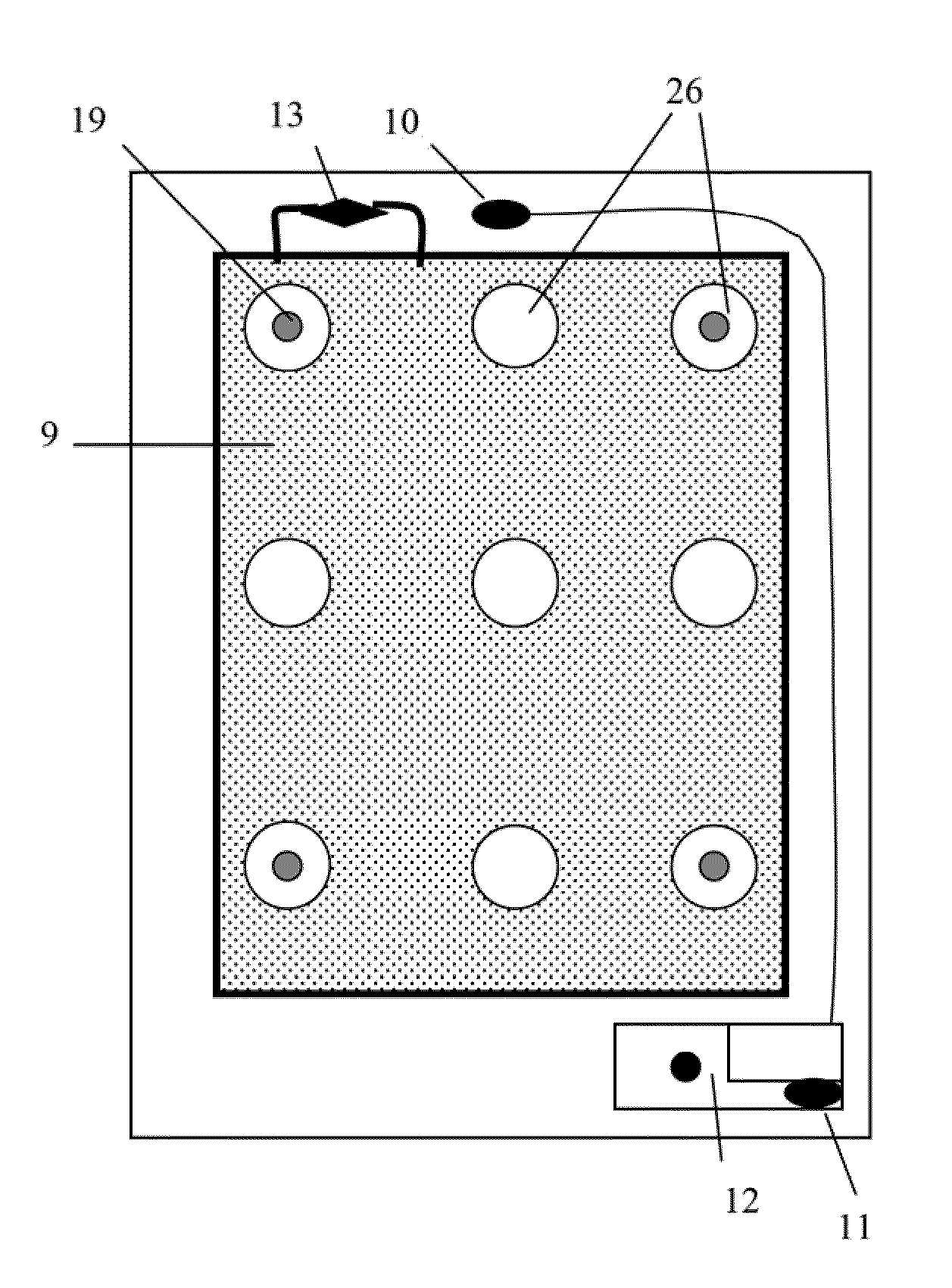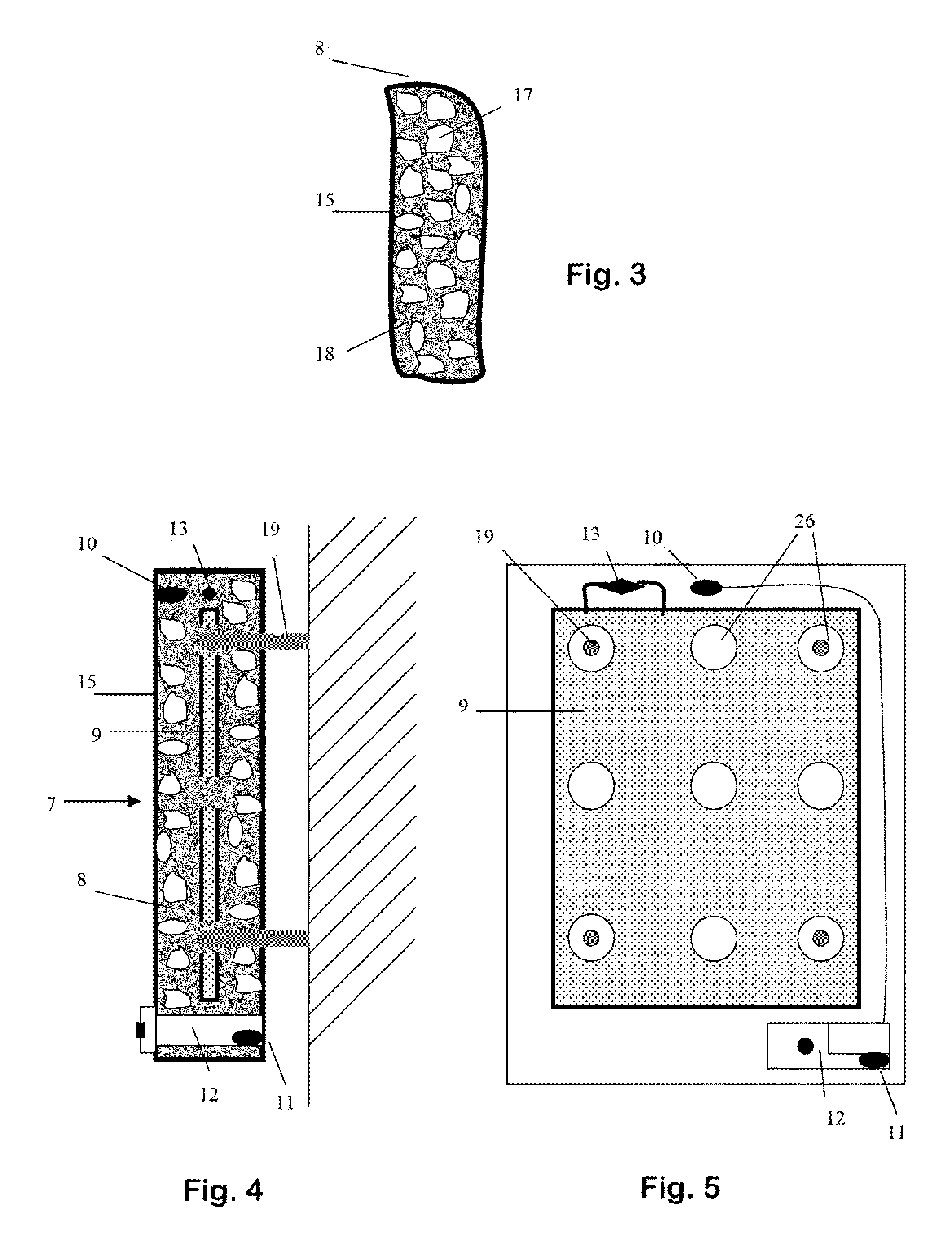Radiant System for Heat Transfer
- Summary
- Abstract
- Description
- Claims
- Application Information
AI Technical Summary
Benefits of technology
Problems solved by technology
Method used
Image
Examples
Example
[0029]The heating element shown in FIG. 3 is composed of aggregates with the following composition:
[0030]45 to 55% by weight particulate waste stone products sized from 1 to 5 mm;
[0031]to 35% by weight stone powder with size from 0.01 mm to 0.5 mm;
[0032]20 to 25% resin by weight with water-based acrylic component.
[0033]FIG. 3 shows a heating body 8 with the composition described above, highlighting the components: particulate waste 17 of stone, stone powder 18, the radiating surface 15.
[0034]The radiant system 7 is constructed in four phases:
Phase 1: Preparation of Agglomeration
[0035]At this stage the three basic components are mixed in a mixture with water to prepare a batch. This mixture has the characteristic of being not solid, having low viscosity and being castable in various shapes and molds. In this phase other components such as fiberglass can also be added to increase the mechanical strength of the compound.
Phase 2: Casting Mold
[0036]The product is poured into a silicone m...
PUM
 Login to View More
Login to View More Abstract
Description
Claims
Application Information
 Login to View More
Login to View More - Generate Ideas
- Intellectual Property
- Life Sciences
- Materials
- Tech Scout
- Unparalleled Data Quality
- Higher Quality Content
- 60% Fewer Hallucinations
Browse by: Latest US Patents, China's latest patents, Technical Efficacy Thesaurus, Application Domain, Technology Topic, Popular Technical Reports.
© 2025 PatSnap. All rights reserved.Legal|Privacy policy|Modern Slavery Act Transparency Statement|Sitemap|About US| Contact US: help@patsnap.com



